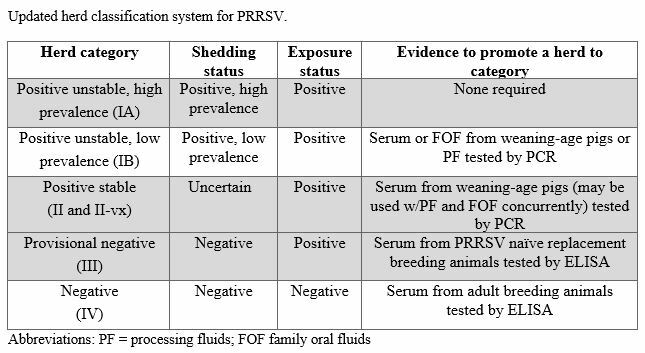



Iowa State showcases research, veterinary experiences at PRRS Workshop
Dr. Daniel Linhares shares PRRS Management Workshop research highlightsDr. Daniel Linhares, DVM, Roy Shultz Professor at Iowa State University (ISU), spoke to The Pig Site’s Sarah Mikesell at the Porcine Reproductive and Respiratory Syndrome (PRRS) Management Workshop held in Des Moines, Iowa, USA in early June. Linhares reflected on research updates from various speakers at the event.
This workshop was set up in two different sessions. The first session consisted of lightning talks with research updates from nine different speakers, and the second half consisted of updates from veterinary practitioners.
A new term that came up during this workshop was family oral fluids (FOF). Dr. Linhares describes family oral fluids as “an oral fluid resulting from hanging the rope in the suckling pig population where both the sow and the baby piglets have access to the rope.” Thus, it is fluids collected from the sow and piglets together.
Dr. Linhares provides research highlights from the speakers:
- Dr. Giovani Trevisan, DVM, research assistant professor at ISU, first spoke on the Swine Disease Reporting System (SDRS) on PRRS and later spoke on whole genome sequencing (WGS). The SDRS is reporting that US PRRS activity is as expected for this time of the year with the caveat of the grow-finish population; this activity is much higher than the breeding herd. He reminded producers that to prevent the next wave of outbreaks, it's important to raise the bar in terms of biosecurity and biocontainment in the grow-finish pig population. In addition, different regions of the US have identified different strains of PRRS virus. Regarding WGS, herds can be infected with multiple viruses at once. Research shows that the more viruses that were detected, the longer it took for the farmer to get rid of the virus, which means more significant production impacts on the farm.
- Dr. Derald Holtkamp, DVM, professor at ISU, provided an update of the new AASV classification system that was recently published in the Journal of Swine Health and Production (JSCHAP). The new AASV classification system incorporates serum or family oral fluids from weaning-age pig or processing fluids tested by PCR and Category I was divided into two categories. Also, a vaccinated sub-category for Category II was added that incorporates II-VX, which is PRRS-positive stable vaccinated.

- Dr. Daniel Linhares spoke on the PRRS outbreak management program in regard to time-to-low-prevalence (TTLP) and time-to-baseline-productivity (TTBP). Studies from 10 years ago were compared to current studies and showed it takes longer now for farms to get rid of the virus and the impact to productivity is higher compared to what was seen 10 years ago. One reason this happens is because herds implement herd closure, interrupting gilt introduction, and these herds are more likely to become negative faster and have less production impact compared to herds that don't close the herd. Another risk factor is exposing the whole herd through vaccination for a quicker time to low prevalence.
- Dr. Gustavo Silva, DVM, assistant Professor at ISU, spoke via a recorded video from Brazil about production data monitoring and the use of productivity data. This includes monitoring number of abortions, number of prenatal losses and feed disappearance if farms are using electronic sow feeding (ESF) systems. These indicators can be used as early alert signals to understand and detect sooner when an outbreak will happen. He demonstrated data that those alert systems could detect outbreaks 2 to 4 weeks earlier than current detection practices.
- Dr. Jianqiang (JQ) Zhang, associate Professor at ISU, spoke about data from experimentally infected pigs with the 1-4-4 L1C PRRS variant. He found that this strain caused more extensive lesions with higher viremia showing that it is a more virulent virus than other virus strains.
- Dr. Chris Rademacher, DVM, clinical Professor at ISU, talked about the use of Ivermectin to control the 1-4-4 L1C variant of PRRS. Based on his experimental studies, he didn't see any impact on either viremia, average daily gain, mortality or treatment in general.
- Henry Osemeke, PhD candidate at ISU, covered pooling samples for PRRS. When pooling for family oral fluids and other samples, it's much better to sample aggressively and pool up to 20 samples rather than collecting just a few samples and sending them in. This allows more crates and more rooms to be tested, and that increases your probability of detection.
Headline image; (L to R) Giovanni Trevisan, Henry Osemeke, Daniel Linhares, Chris Rademacher, Jianqiang (JQ) Zhang, Cesar Corzo, Derald Holtkamp.









